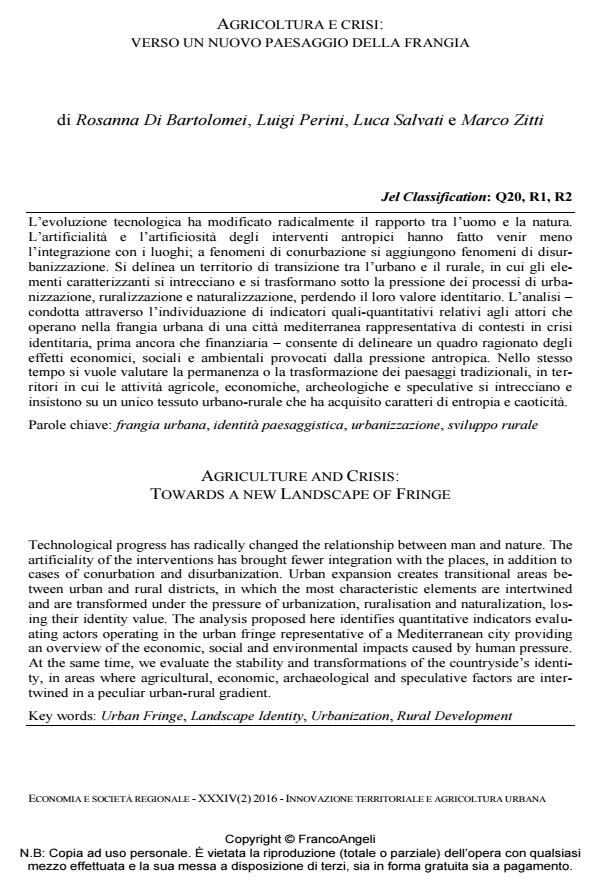Agricoltura e crisi: verso un nuovo paesaggio della frangia
Titolo Rivista ECONOMIA E SOCIETÀ REGIONALE
Autori/Curatori Rosanna Di Bartolomei, Luigi Perini, Luca Salvati, Marco Zitti
Anno di pubblicazione 2016 Fascicolo 2016/2
Lingua Italiano Numero pagine 13 P. 31-43 Dimensione file 310 KB
DOI 10.3280/ES2016-002003
Il DOI è il codice a barre della proprietà intellettuale: per saperne di più
clicca qui
Qui sotto puoi vedere in anteprima la prima pagina di questo articolo.
Se questo articolo ti interessa, lo puoi acquistare (e scaricare in formato pdf) seguendo le facili indicazioni per acquistare il download credit. Acquista Download Credits per scaricare questo Articolo in formato PDF

FrancoAngeli è membro della Publishers International Linking Association, Inc (PILA)associazione indipendente e non profit per facilitare (attraverso i servizi tecnologici implementati da CrossRef.org) l’accesso degli studiosi ai contenuti digitali nelle pubblicazioni professionali e scientifiche
L’evoluzione tecnologica ha modificato radicalmente il rapporto tra l’uomo e la natura. L’artificialità e l’artificiosità degli interventi antropici hanno fatto venir meno l’integrazione con i luoghi; a fenomeni di conurbazione si aggiungono fenomeni di disurbanizzazione. Si delinea un territorio di transizione tra l’urbano e il rurale, in cui gli elementi caratterizzanti si intrecciano e si trasformano sotto la pressione dei processi di urbanizzazione, ruralizzazione e naturalizzazione, perdendo il loro valore identitario. L’analisi - condotta attraverso l’individuazione di indicatori quali-quantitativi relativi agli attori che operano nella frangia urbana di una città mediterranea rappresentativa di contesti in crisi identitaria, prima ancora che finanziaria - consente di delineare un quadro ragionato degli effetti economici, sociali e ambientali provocati dalla pressione antropica. Nello stesso tempo si vuole valutare la permanenza o la trasformazione dei paesaggi tradizionali, in territori in cui le attività agricole, economiche, archeologiche e speculative si intrecciano e insistono su un unico tessuto urbano-rurale che ha acquisito caratteri di entropia e caoticità.
Parole chiave:Frangia urbana, identità paesaggistica, urbanizzazione, sviluppo rurale
Rosanna Di Bartolomei, Luigi Perini, Luca Salvati, Marco Zitti, Agricoltura e crisi: verso un nuovo paesaggio della frangia in "ECONOMIA E SOCIETÀ REGIONALE " 2/2016, pp 31-43, DOI: 10.3280/ES2016-002003